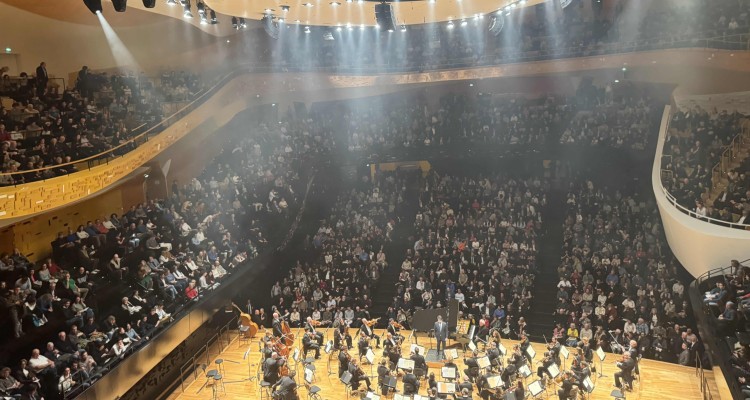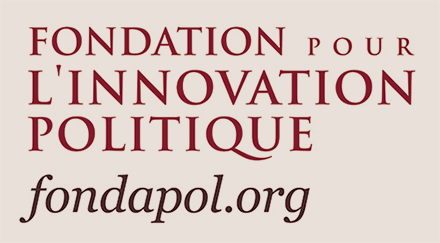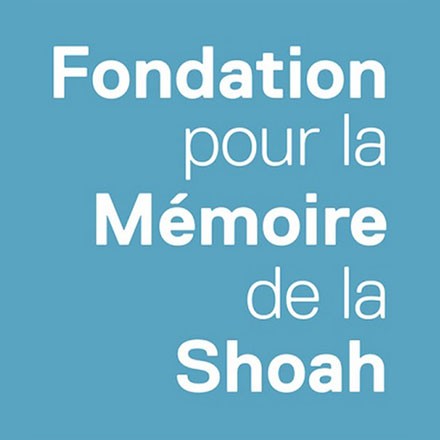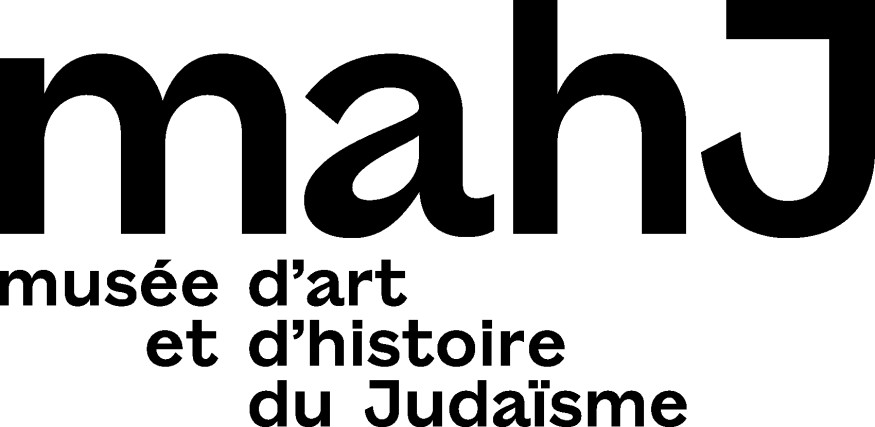Primo Levi died on April 11, 1987 in Turin. On the anniversary of his death, Giorgio Berruto revisits the events of his reception in Italy; in other words, the way in which the witness waited before being recognized as the great writer that he is, today unanimously celebrated.
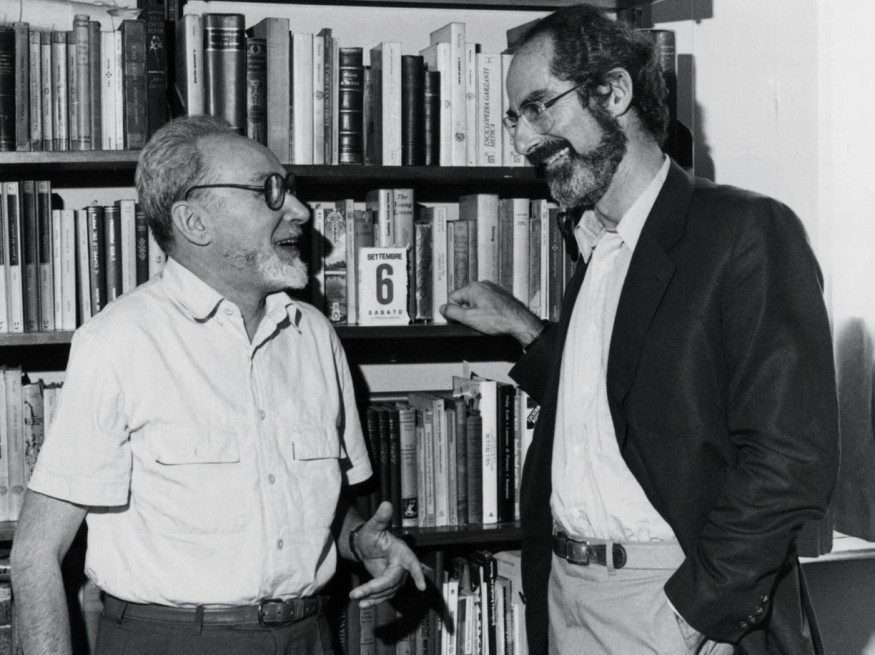
If Primo Levi was first perceived as a witness of Auschwitz, the one who gave the most accurate and striking image of it, today he is considered a classic of Italian twentieth-century literature and a universally significant author. As Marco Belpoliti, one of the main Italian specialists on the author of If this is a Man, points out, it is clear that we are dealing with a great witness because we are dealing with a great writer, and not the opposite. Many witnesses have written about the camps, but few writers have done so like Primo Levi.
Yet the Turinese writer struggled to make a name for himself after the Second World War. It was in the months following his return to Italy – a long and adventurous journey, which he recounted in The Truce – that Primo Levi wrote what would become If This Is a Man. He sent the manuscript to the Turin publisher Einaudi, who refused to publish it. The book was published in 1947 by the small publisher De Silva, before Einaudi reissued it, more than ten years later, in 1958. The real manager of Einaudi, the author Cesare Pavese, an anti-fascist but who had not taken part in the Resistance, was the man who, likely, had decided, together with Natalia Ginzburg, not to publish the book. As Belpoliti writes in the volume Primo Levi di fronte e di profilo (Guanda): the refusal ‘is not so much the result of a lack of understanding as of a deliberate editorial choice’ (our translation), which can be explained by the numerous books on the Italian Civil War and the deportation that had already been published in the previous two years and by their poor sales rate. But Einaudi’s failed publication has another equally important cause, of a linguistic nature, which we shall return to.
However, it was only in the second half of the 1950s, after Pavese’s death and in a different historical context, that Einaudi finally decided to collect the memoire of the partisans’ war and of the anti-fascist militants, and published, in 1958, If This Is a Man, in a revised and deeply modified version by Levi. The new editorial program reached its peak two years later, and it was in the context of protests against Tambroni’s Christian Democratic government, supported by decisive votes from the Italian Social Movement, the neo-fascist party, that Enaudi decided to reintroduce Levi’s first work in the new series of “Readings for Primary Schools”. The text then touches the world of education for good. In 1963, The Truce was also published by Einaudi and won the Campiello prize. Over the next twenty-five years, Enaudi published his short stories (The Sixth Day and Other Tales, A Tranquil Stare, The Periodic Table, Moments of Reprieve), his poems, a personal anthology of readings (The Search for Roots: A Personal Anthology), his novels (The Wrench, If Not Now, When?) and various writings (Other People’s Trades), including an essay (The Drowned and the Saved), the author’s last work in which he recalls his experience in Auschwitz. Yet Primo Levi, now noticed by the public but ignored by the critics, continues to be considered above all just as a witness.

The historian Alberto Cavaglion, one of Levi’s great specialists, reminds us that “there is a rupture in the reception of Primo Levi that cannot be ignored”. In his opinion, in order to revisit Levi’s success, it is essential to take into account the “brutal turnaround in the last years of his life,” after Saul Bellow, and then Philip Roth, were in favour of the introduction of his books in the United States. But this trickle-down success across the Atlantic did not occur until two or three years before his death in the mid-1980s. Before that, Levi was a very popular author, his books won prizes, his print runs were high, but he had no attention from the academic world, nor from the newspapers, where he had only a few good reviews. He had not been interviewed by the big names in the press or by well-known Italian intellectuals. His American success and, more sadly, his death, have put the spotlight on his figure, his life and his works.
On 11 April 1987, Primo Levi threw himself from the stairwell of the building where he lived, at 75 Corso Re Umberto in Turin. In the years that followed, many people began to read or re-read his works, often in the light of his suicide. “At that point,” Cavaglion explains, “the most important Italian intellectuals, the academic world, and newspaper critics took up the subject, and interest in Levi only increased in the following decades.” This craze has led to an incredible worldwide success with continuous translations and editions of his books, unpublished works, conversations and interviews, and complete works, of which three different editions have already been produced, each one more documented than the last. However, many of those who began to speak of Levi as a classic author of universal literature had interviewed him during his lifetime rather as a witness to the Camps, without considering him as the author of true literary works. His books, especially the first ones, were relegated to the status of memoirs. It must also be said that his death coincided with a particular historical period: 1987 was shortly before the end of the Cold War, with the fall of the Berlin Wall. Furthermore, in Italy in 1988, the fiftieth anniversary of racist laws marked a rediscovery of Mussolini’s antisemitism and indirectly stimulated interest in Levi’s work.
Throughout his life, Lévi did not keep the company of the publishing world and did not venture into the field of fashionable experimental writing. For the critics, he remained above all a chemist who had described the deportation and the difficult return home in a language that was too academic. In reality, things had slowly started to change with the publication of The Wrench in 1978. Although it is a collection of several short stories, the publication can be considered as his real first novel. As Levi confided to Giorgina Arian Levi, who interviewed him in the Turin Jewish periodical Ha Keillah at the time, he was happy to devote himself to a work of fiction and thus try to escape the rigid definition of an author of the Camps. The Wrench, an ironic narrative about manual labour that drew criticism from the radical left for the lack of politicisation of its protagonist, the factory worker Faussone, won the prestigious Strega Prize and boosted sales of his earlier books, which now add up to hundreds of thousands. Interviewed by Antonio De Benedetti in Corriere della Sera, Levi said that his intention with The Wrench and his earlier book The Periodic Table was to break down the rigid division in Italy between the humanities and the so-called formal sciences, which generally devalues the latter. Levi explains in this interview that “even the work of a ‘small machinist’ can be a source of inspiration and therefore of narration”. A few isolated critics then began to take an interest in his work and to note the lack of recognition it received. This was the case of Giovanni Tesio who, in 1979, pointed out in the magazine Belfagor that “nobody in the literary world was interested in Levi. I was the first to take him into consideration as a writer rather than as a witness and chronicler of the Camps.”
By this time, Levi, retired from his career as a chemist, was increasingly invited to testify in schools. These years of testifying were also the controvertial years over Holocaust denial, which was becoming more and more prominent in public debate. Levi was particularly disturbed by the intervention of the French revisionist Faurisson, published in Le Monde on 29 December 1978, who placed his pseudo-historical thesis on the non-existence of gas chambers on the same level as the testimony of a former deportee. Levi responded against Faurisson’s “indecent elucubrations” by writing in La Stampa and giving multiple interviews. But once again, it was the witness and not the writer who attracted the interest.

Primo Levi’s American success, which peaked in the mid-1980s, eventually led to his fame in Italy and around the world. However, Levi’s books had already been translated for many years, and sometimes even for decades, into the major European languages. Cavaglion explains this difference in reactions abroad: “We must distinguish between the first books that were translated very early but had a limited circulation, and then, in recent years, those that have been reissued with new translations. Even abroad, Levi did not enjoy critical interest until the 1980s. In Germany, for example, it was Levi himself who provoked this interest and maintained it, by controlling the translations, by taking care of the reception, by writing to the readers, because it was very important for him to be read and known by German-speaking readers [a chapter of the work The Drowned and the Saved is devoted to correspondence with German readers]. At the same time, he was not very popular in France and was never really recognised there during his lifetime. It is curious to note that Levi had announced the outline of his destiny in his autobiography The Periodic Table – a seminal book – which first established his reputation as a chemist before that of a writer. As is often the case with the fame of European writers, Europe became interested in him in the wake of an American discovery. After the decisive interventions of Bellow and Roth, Levi wanted to go to the United States for a tour that would surely have been a launching pad, but he had to give up because of illness and fatigue. He was a successful author but rather isolated, far from literary circles. He was asked for his sage opinion on scientific subjects as a chemist or on international politics related to the Middle East conflicts. So, yes, he was interviewed, but the interviewers were political journalists who asked him for a political opinion, without asking him about the particularity of his books or the originality of his literary sources. The interest in Levi as a writer is posthumous.”

While critical interest in Levi came late, the interest of many young students dates back to the early 1960s, when If this is a Man began to be introduced in Italian schools. “This had a great influence on its diffusion to the public,” Cavaglion points out. “The school edition of If this is a Man and The Truce, in particular, was very successful, thanks to the personal choices of teachers who relied on the text but without a critical bibliography comparable to that available for other contemporary writers, from Calvino to Moravia to Bassani. Today, Levi is considered a fundamental author of twentieth-century Italian literature, and even his works of short fiction are enjoying retrospective success. But those of you who are my age and lived in Turin during the years when the science and science fiction collections came out know that he rarely appeared in interviews and that, when he was presented in bookshops, there were not many people to listen to him.”
On the contrary, today, Cavaglion continues, “it is the writer, dialectician, science-fiction lover, etc. Levi who is of interest. Studies on Levi have undergone a 360 degree turn, making him the most studied author in Italy, just after Calvino. The linguistic aspect of Levi’s work is now a major factor in the causes of his growing fame. His writing, as Levi himself defined it, is of a “laborious clarity”, clear, classical and at the same time coming from different sources. If his writing is fundamental to understanding his immense success over the last thirty years, it also helps to understand why he had such difficulty establishing his reputation after the war. As Belpoliti has written, ‘If This Is a Man, linguistically and narratively, was different from the books of that period’. Another important scholar of Levi studies, Domenico Scarpa, points out that Calvino’s writing in The Path to the Nest of Spiders, also released in 1947, and even more so those of Vittorini, Pavese and Natalia Ginzburg, i.e. Einaudi’s editors and main authors, are experimental writings that privilege dialogue, spoken language and the immediacy of the descriptions; representatives of what was then called neo-realism (before the term was rejected and is now only applied to the filmmaking style). Levi’s writing is none of these things; on the contrary, it is the language of the Italian classical high school, that of the literary school stream chosen by Fascism, under the auspices of the philosopher Giovanni Gentile, to train a new ruling class. In the post-war period, Levi’s language, so rich in references to Dante, Manzoni and Leopardi, seemed outdated to the ears of Einaudi’s authors, who hoped that literature would evolve towards immediacy and the popular. Gilles Deleuze and Félix Guattari’s words about Kafka are perfectly suited to understand the initial rejection of If This Is a Man: it is written in a language foreign to its time.”
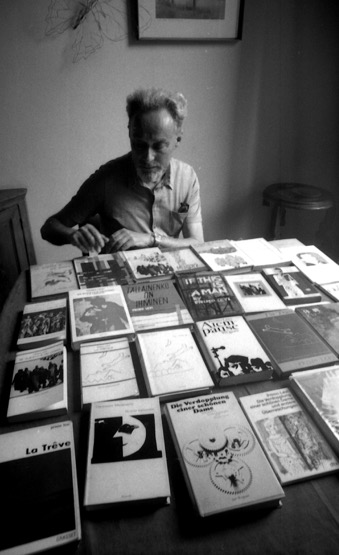
In his later books, Primo Levi never abandoned his academic style and even intervened in a debate between two forms of writing: those for whom it is necessary to “write in a clear manner” on the one hand, and the advocates of “an obscure manner” on the other. He takes the side of the “clear manner”. Of course, his way of writing is composite, marked not only by the Italian literary tradition but also by his Jewish heritage, by a positivist education, by chemistry – understood as a vocation and a profession in the Weberian sense of the term – and above all by the rejection of the neo-idealist and fascist dualism between spirit and matter, history and commitment, contemplation and action. Added to this is an irrepressible curiosity and confidence in literature as the highest expression of humanity. Thus, in a chapter of If This Is a Man, ‘The Song of Ulysses’, Levi, during the distribution of food, tries to explain to his Alsatian companion Jean Samuel, known as Pikolo, the last adventure of the Greek hero in Dante’s version, at which point, unable to remember part of the song, he confesses that he would give his portion of soup, a miserable watery broth that barely allows him to survive, to remember these few lines.
The lessons learned during his years at the classical high school are also reflected in Levi’s almost philological attention to words, examining their etymology and meaning. Again in ‘Song of Ulysses’, he writes, recalling Dante: “… ‘So on the open sea I set forth’. Of this I am certain, I am sure, I can explain it to Pikolo, I can point out why ‘I set forth’[”misi me” in Dante language] is not ‘je me mis’, it is much stronger and more audacious, it is a chain which has been broken, it is throwing oneself on the other side of a barrier, we know the impulse well ” Levi has also taken from spoken language, the world of the factory, Piedmontese Judaism and, like a good chemist, he doses the compounds to form new combinations of languages. Writing is a long and difficult task, in his own words “a passage from darkness to light”, in the same way that Michelangelo’s figures emerge naturally from marble. Filing and milling words and phrases, like removing superfluous fragments of marble, is to apply a principle of economy and seek elegance. “Concentrate, crystallize, pump dry, wash and recrystallize”: this is how he describes the preparation of zinc sulphate in The Periodic Table, but this description could also capture his conception of the writing profession.
However, as Robert Gordon clearly shows, there is a dark substratum in Levi’s work, which permeates the solar side and which, from time to time, rises to the surface, as in some of his short stories and in the anthropological, astronomical, philosophical and even entomological digressions of Other People’s Trades. According to Gordon, we should not conclude from this that there is an expressionist or irrational side to Primo Levi, but that he sees an interval in which the synthesis of rationality and the unconscious, of the Enlightenment and illusion, of realism and fantasy, is realized. Here emerges a fascination for the unknown and mysterious causes, the same causes that the modern development of ancient alchemy, chemistry, described in the short story “Hydrogen” as “an indefinite cloud of future powers” and a tool to “scrape the bowels of the mystery with our forces”. Writing, that is, proceeding towards clarity, is therefore above all a way of putting things in order. In the words of the critic Cesare Cases, Primo Levi remains the best “living advertisement for the old classical high school”.
“The position of the person trying to update Levi’s bibliography is not an easy one; we travel at the rate of four or five monographs every three months, to which must be added conferences around the world,” smiles Cavaglion. Since 2008, the International Center for Primo Levi Studies, based in Turin, has been promoting his work and providing a reference point for researchers. After the complete edition of the works published in 2015 in the United States by Ann Goldstein and that of 2017-2018 in Italy in three prestigious volumes (one of which is exclusively composed of interviews) under the direction of Belpoliti, we are now waiting for the update of the bibliography edited by Scarpa, the result of an immense work of research as well as new volumes with all the contributions of Levi and those about him. We must add the dozens and dozens of exhibitions, theatrical adaptations, bachelor’s and doctoral theses, and conferences, all of which testify to a now uncontrollable interest. So much so that we can say today, without fear of contradiction, that Primo Levi has finally become a great exemplar of Italian literature.

